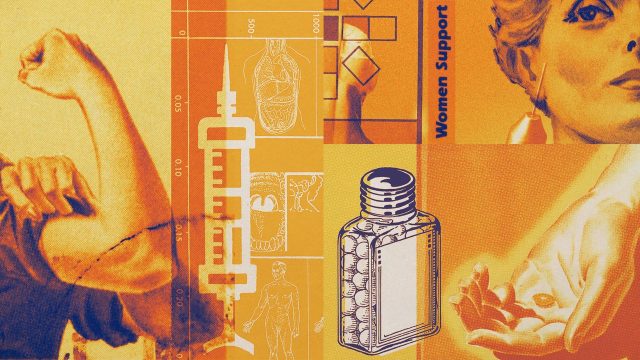
More women are getting testosterone therapy and touting improved libido and energy as a result. But the trend is complicated by many women taking more than may be optimal because of a lack of standard-dose products designed for female bodies. As of now, not enough research has been conducted on supplemental testosterone use by women.
Why are women using testosterone?
While testosterone is largely associated with men’s health, the hormone plays a crucial role in women’s health as well. Testosterone is produced by the ovaries and adrenal glands and “helps regulate sex drive, supports bone and muscle health, and contributes to mood and energy” in women, said National Geographic. Production peaks in women between their late teens and early 20s, then declines over time, reaching about half its starting level at age 60.
Now, many perimenopausal and menopausal women are taking testosterone and reporting its known benefits. But while this seems like a boon, many women are also taking doses that are “much higher than medical societies’ guidelines recommend,” said The New York Times. Women in their 40s and beyond are “experimenting with higher levels of the hormone than they produced naturally at any point in their lives,” with some “even approaching the levels of a teenage boy.”
What’s the state of testosterone therapy research?
The medical community does not “have a standard value for ‘normal’ testosterone levels” in women, said the Cleveland Clinic. And currently, the “only evidence-based use of testosterone for women is treating low libido after menopause,” said National Geographic. But there’s “no standardized female-specific way to prescribe it.”
Restoring testosterone levels in women to those of when they were in their late 30s can improve sex drive without severe side effects, according to research, but no products exist that achieve this accurately. Women seeking testosterone support can “either purchase products intended for men and estimate the appropriate dose (about one-tenth of what’s recommended for men) or have prescriptions filled at a compounding pharmacy, which provides customized medications not regulated by the FDA,” said the Times. Taking too high levels of testosterone can cause women to “experience hair loss, a deepening of their voices, more facial hair or clitoral enlargement” — side effects that “may not be reversible.”
While improved libido has been evident, other benefits, like boosting energy or strengthening bones, have not been backed by science with long-term data. The Food and Drug Administration has not approved a testosterone product for women, despite the agency not requiring similar data for many approved male testosterone products. In 2004, the FDA rejected a testosterone patch submitted for approval. So women’s options to “pursue testosterone therapy are typically limited to more nontraditional avenues like wellness centers, nutritionists, med-spas and longevity practitioners,” none of which are covered by insurance, said Futurism.
Australia is the only country with a government-approved testosterone product made for women, with other countries working to make products available. In the U.S., several “large trials” of products — “patches, creams and gels” — have recently shown that testosterone improves “women’s desire, arousal, sexual responsiveness and even self-image,” said the Times. The hope is that government research will catch up to women’s ongoing testosterone needs.
There is no FDA-approved testosterone product for women






